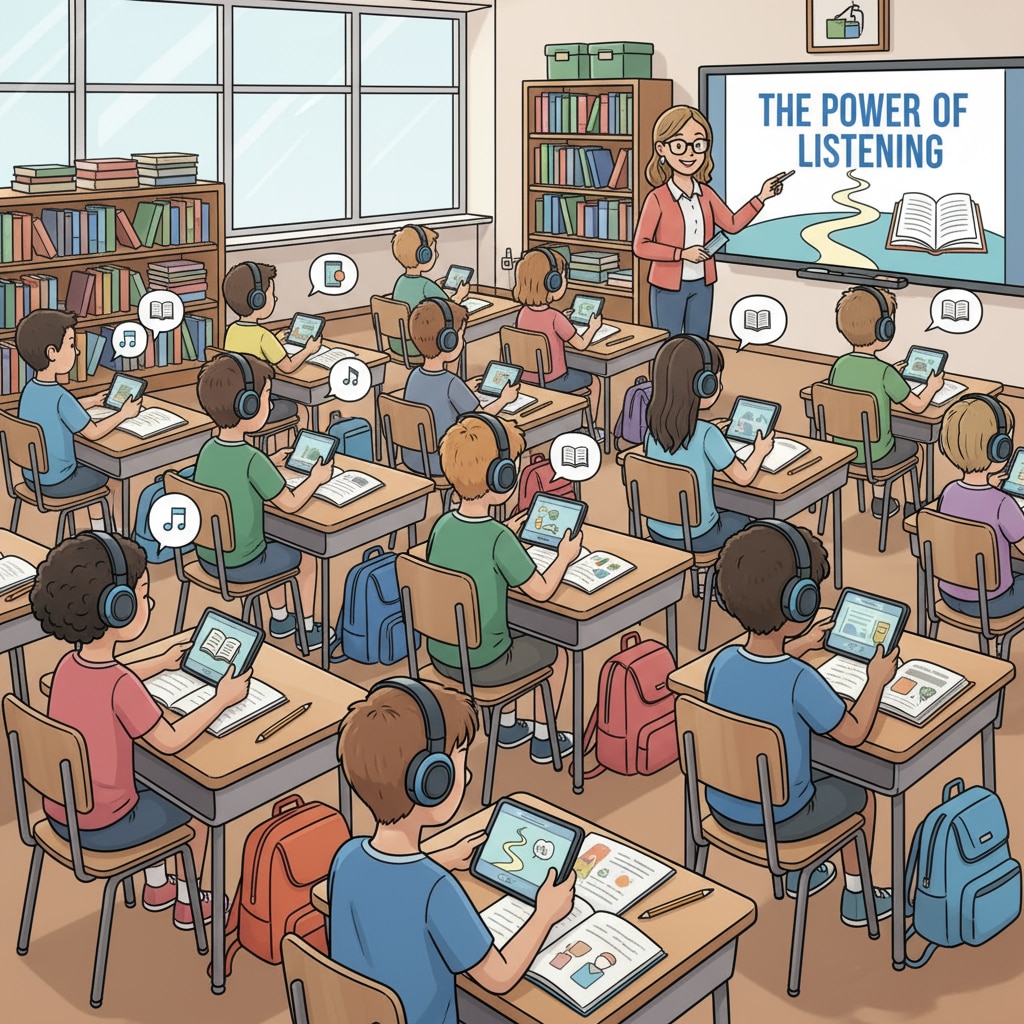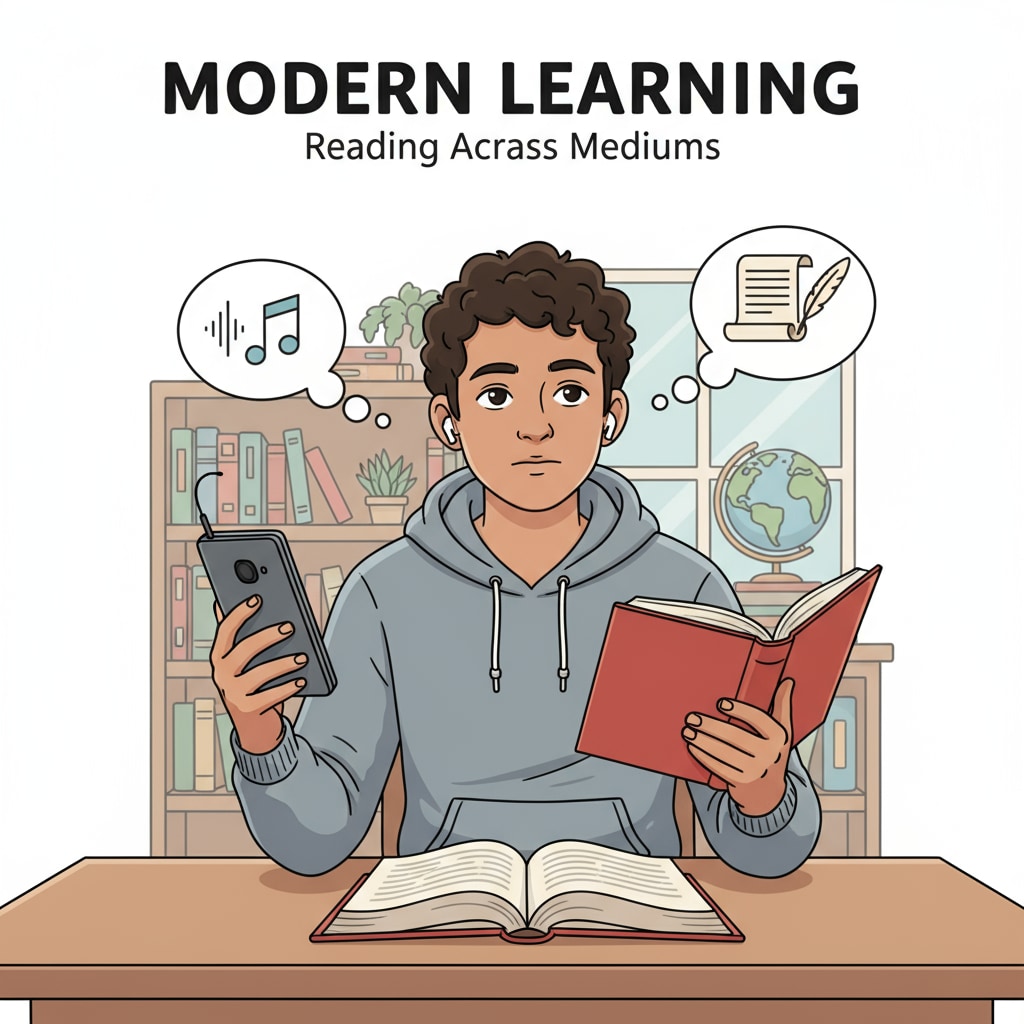In the realm of language arts education, the use of audiobooks as a substitute for traditional reading has become a highly debated topic. This shift has raised concerns about its implications for students’ reading fluency and overall learning capabilities. As technology continues to advance, it’s crucial to examine the educational philosophy behind this trend and its potential long-term effects.

The Rise of Audiobooks in Education
Audiobooks have witnessed a significant surge in popularity within educational institutions. With the convenience of digital devices, students can now access a vast library of audiobooks anytime, anywhere. This accessibility has made them an attractive option for educators looking to enhance students’ engagement with literature. For example, many schools are incorporating audiobooks into their curriculum to cater to different learning styles. According to EdWeek, the use of audiobooks in schools has been on the rise in recent years.
Impact on Reading Fluency
One of the main concerns regarding the use of audiobooks in place of traditional reading is its impact on reading fluency. Reading fluency involves the ability to read text accurately, smoothly, and with expression. While audiobooks can expose students to a wide range of vocabulary and language structures, they may not provide the same level of practice in decoding written words as traditional reading. As a result, some educators worry that relying too heavily on audiobooks could hinder students’ development of reading fluency skills. However, proponents argue that audiobooks can also enhance fluency by modeling proper pronunciation and intonation.

Another aspect to consider is the role of visualization in reading. Traditional reading often requires readers to create mental images based on the text, which can enhance comprehension. With audiobooks, this process may be different as the listener is relying on the narrator’s interpretation. This raises questions about how audiobooks affect students’ ability to engage in deep reading and make connections with the text.
Readability guidance: The paragraphs above discuss the rise of audiobooks and their impact on reading fluency. Each point is presented clearly, with examples and a balance of different viewpoints. Transition words like ‘however’ and ‘while’ are used to show contrast.
The Educational Philosophy Conflict
Behind the debate over audiobooks in language arts education lies a conflict in educational philosophy. On one hand, the use of audiobooks aligns with the principle of meeting students where they are and catering to diverse learning needs. In a digital age, students are more accustomed to consuming information through audio and visual means. By incorporating audiobooks, educators can make learning more accessible and engaging for some students.
On the other hand, traditional reading is deeply rooted in the educational value of developing independent reading skills, critical thinking, and the ability to engage with complex texts. Some educators believe that sacrificing traditional reading for audiobooks may undermine these fundamental aspects of language arts education. As stated in an article by the National Education Association, reading aloud (which can include traditional reading) has numerous benefits for students’ language development.
Ultimately, the decision of whether to use audiobooks as a substitute for traditional reading in language arts education requires a careful consideration of these educational philosophies and the specific needs of each student.
Readability guidance: This section presents the two sides of the educational philosophy conflict. Short paragraphs are used to clearly distinguish between the two viewpoints, and external links are provided to support the arguments.
The Long-Term Learning Perspective
Looking at the long-term implications, it’s important to consider how the use of audiobooks may affect students’ learning abilities beyond the classroom. While audiobooks can be a valuable tool for immediate engagement, traditional reading may offer more lasting benefits in terms of developing cognitive skills such as concentration, memory, and analytical thinking.
For instance, when students read a physical book, they are more likely to engage in self-reflection and make connections between different parts of the text. This active engagement with the material can lead to a deeper understanding and better retention of information. In contrast, listening to an audiobook may be a more passive activity, which could potentially limit students’ ability to fully process and internalize the knowledge. However, it’s also possible that a combination of both audiobooks and traditional reading could provide the best of both worlds, allowing students to benefit from the unique advantages of each method.
Readability guidance: Here, the long-term learning perspective is explored. The sentences are of appropriate length, and transition words like ‘while’ and ‘however’ are used to show different aspects of the discussion.
In conclusion, the question of whether audiobooks should replace traditional reading in language arts education is a complex one. It involves weighing the benefits of accessibility and engagement that audiobooks offer against the importance of developing fundamental reading skills. As educators, it’s essential to find a balance that meets the diverse needs of students while upholding the core principles of language arts education. By understanding the impact on reading fluency and the underlying educational philosophy conflict, we can make informed decisions that will shape the future of students’ literacy development.


